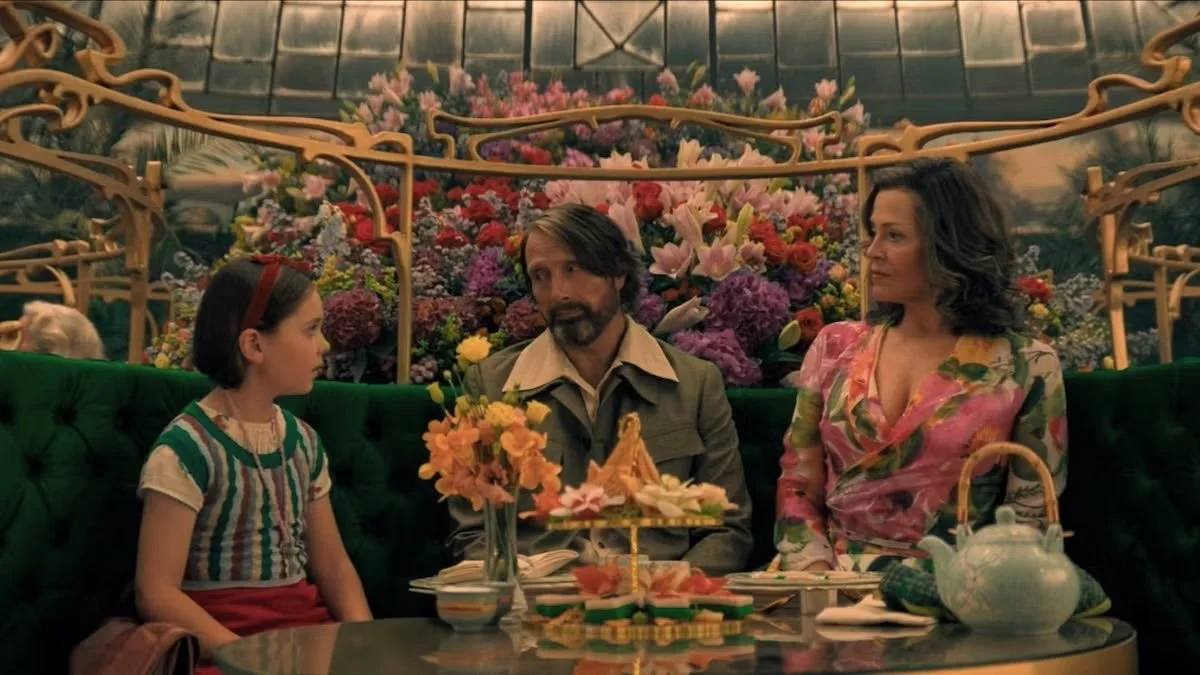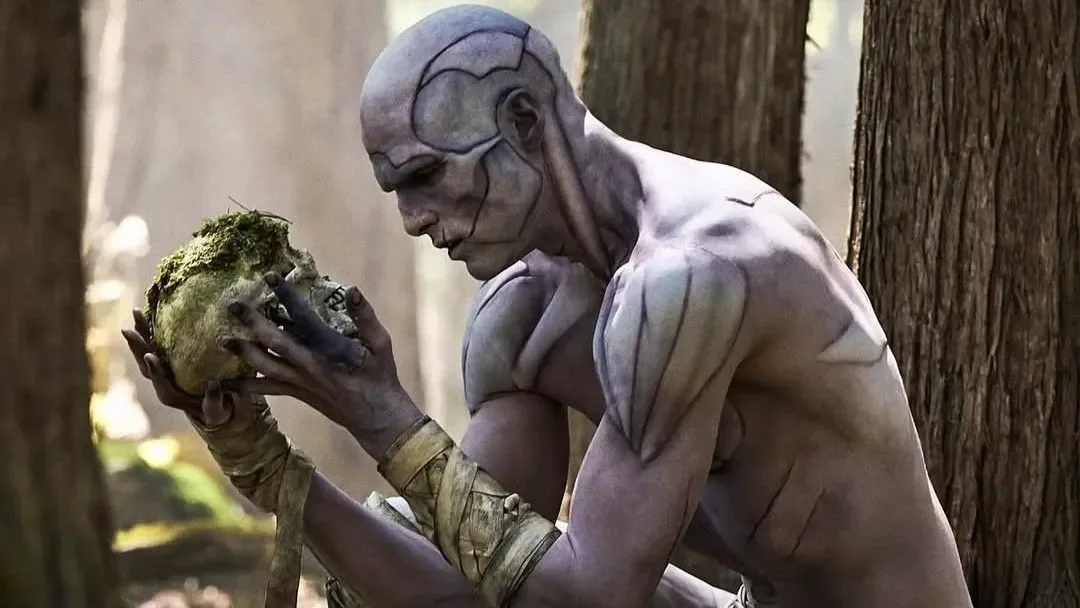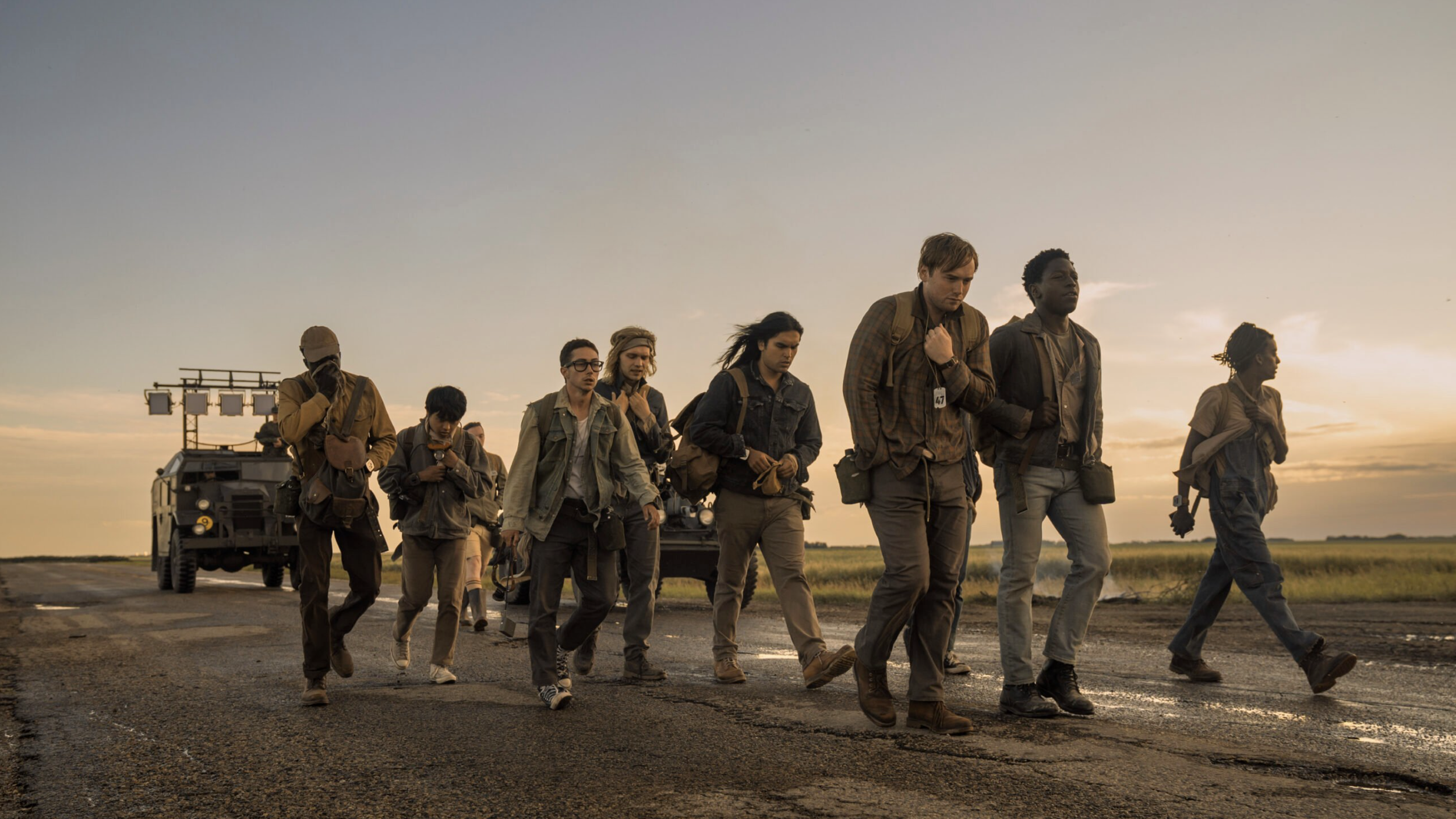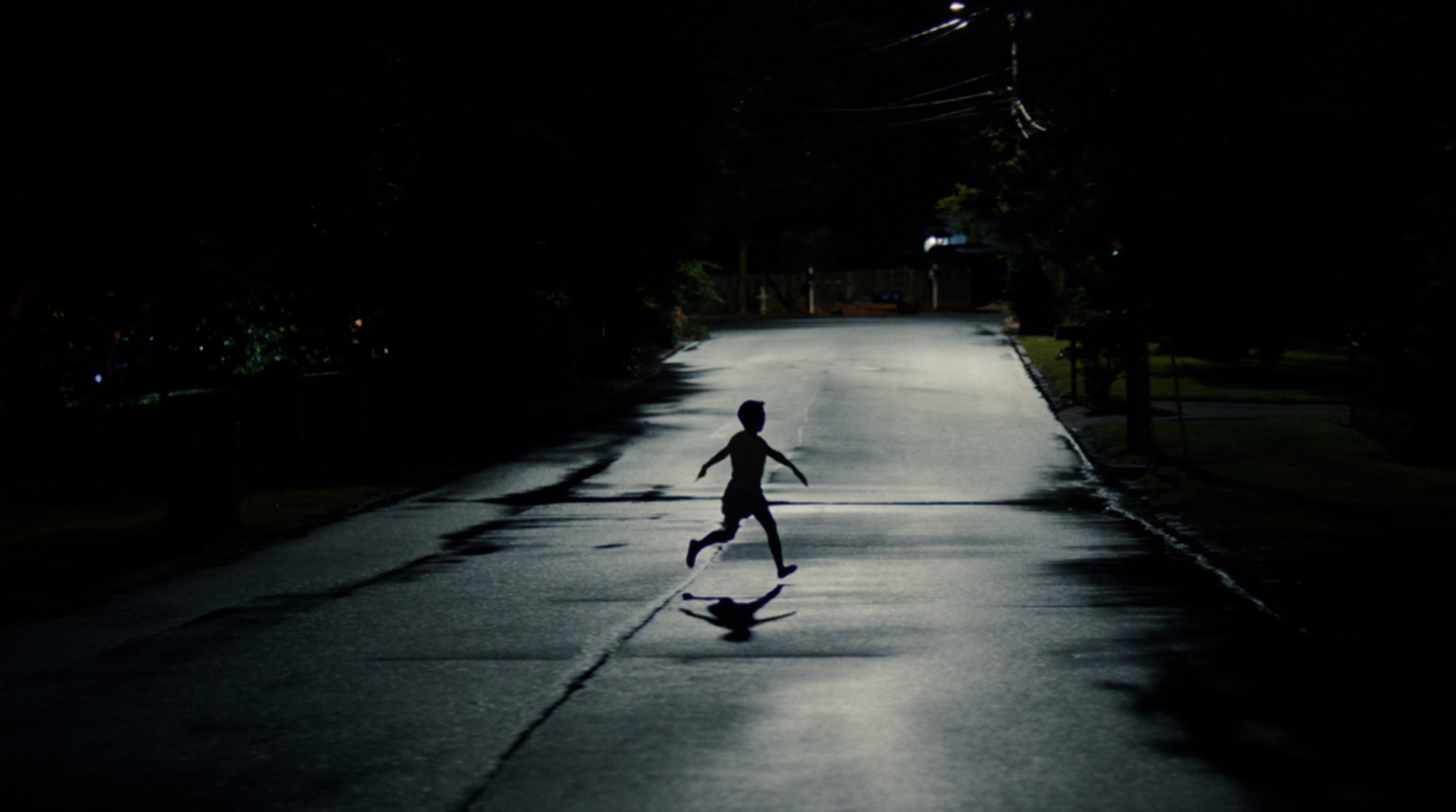DUST BUNNY
Directing: B+
Acting: B
Writing: B+
Cinematography: A-
Editing: B+
Special Effects: B
Why does nobody know about this movie? This is a movie that deserves to be known, and I can’t even remember where I heard about it. If I ever saw a trailer, it was only once. Dust Bunny opened this last weekend on 402 theater screens and it made . . . $341,283. It was #17 its opening weekend. To be a little fair, it made an average of $848 per screen (and if we average $15 per ticket that’s about 57 tickets per screening). I can tell you this much: at the showing I just went to, I was one of three people in the theater. It’s hard not to conclude that someone in the marketing department at Roadside Attractions really dropped the ball.
Granted, Dust Bunny, a dark and twisted fantasty-action-monster movie, is not the kind of movie people pack theaters to see anymore. I actually took a public transit ride, on both a light rail train and a bus, for nearly an hour to a suburban theater to see it—and I found it to be completely worth the effort. I doubt I could find another person who would feel the same. Perhaps a fair number of people will soon discover it on a streamer. I can only hope. I’m already eager to introduce it to people I’m sure will have never heard of it.
This is a pretty impressive feature film debut by writer-director Bryan Fuller, who up to now made a long career out of writing and producing television shows, from Pushing Daisies to Hannbial, not to mention no fewer than four different Star Trek series over the past three decades. Dust Bunny stars Mads Mikkelsen, who played Hannibal Lecter in the aforementioned Hannbal series. This is the one major involvement in Fuller’s past career that has a clear connection to Dust Bunny, which is a lot like a cross between Where the Wild Things Are and Kill Bill.
To be fair, I struggle to pinpoint who exactly the target audience is for Dust Bunny, unless you count—me. I am exactly the target audience for Dust Bunny, which I found utterly delightful. Its playful use of a child’s wild imagination crossed with real-world violence is very much my jam. It’s a fantasy movie, a monster movie, and an action movie all rolled up into one. It has a sensibility largely like a kids’ fantasy, with a little girl named Aurora (a wonderful Sophie Sloan) at its center. Mikkelsen plays the unnamed neighbor hitman who Aurora hires to kill the monster under her bed, who she believes ate her parents.
In the opening sequence, we see a tuft of dust floating through the air, past a city skyline that is clearly a mashup of London and New York, and into an apartment window. The camera follows it as it wafts through the apartment, picking up more tufts, until it becomes a little bunny, hiding under Aurora’s bed. Aurora is terrified, and over the course of the film, the bunny grows into a monster that lives under the floorboards of her room. The angled boards tip up in very cool ways as the dust bunny eventually breaks through the floors to eat its victims—and, spoiler alert, there are many victims.
Several scenes go by before it becomes even halfway clear what the hell is going on, but I was locked in from the first frame, with the darkly colorful production design and swooping camera movements, almost like the movie Hugo had gone through some kind of underworld filter. Aurora follows the hitman through the city, observing him from rooftops as he appears to slay a dragon—something he later insists was a group of men. Many scenes follow in which Aurora insists there is a real monster under the floor, and the hitman insists she just thinks that’s what she saw but there have been dangerous men in her apartment. Dust Bunny never wants to make clear which thing is actually going on, although it does eventually lean hard on one side, at which point I’ll admit that if it was going for metaphor, it kind of lacks clarity on that front.
But I can hardly be bothered to care, I had such a good time with this movie, from start to finish. I haven’t even mentioned Sigourney Weaver yet, who shows up as an associate of our hitman, evidently a longtime mentor, perhaps something with a deeper connection. Weaver is 76 years old now, and after seeing her clearly de-aged in the Avatar movies, it’s refreshing to see her actually looking her age. Her Laverne in Dust Bunny is both subtly and delightfully villainous; two characters get key moments in this movie involving stiletto heels, but Laverne’s hybrid pistol-heels are my favorite. There are also well-played smaller parts by The Woman King’s Sheila Atim and The Suicide Squad’s own Polka-Dot Man, David Dastmalchian.
There’s a peculiarness to the tone of Dust Bunny that really speaks to me, such as the moment we are introduced to Laverne, she suddenly opens her mouth wide in an almost grotesque way, explaining that she needs to do it in order to un-clench her jaw. Laverne spends the entire movie talking about how Aurora needs to be killed, because she’s seen the hitman’s face, and other killers are apparently after her. Eventually we learn that Aurora is a foster child now in her third family; this, I guess, makes it easier to take that who we initially assumed were her parents disappear from the movie after only a couple of scenes. Mikkelsen’s hitman has taken a liking to Aurora, which Laverne deduces is his attempt at working through his own childhood trauma.
The whole London/New York vibe is hard to pin down given that all the characters speak with American accents, save for the hitman, who speaks with Mikkelsen’s Danish accent—something quite directly looped into a running joke about his inability to pronounce “Aurora” correctly. Clearly, Dust Bunny exists out of time and place, lending itself to the fantasy element it leans hard into. As for why the monster under Aurora’s bed is a giant bunny, I couldn’t tell you—except that it rings true as a creation of a child’s imagination. Aurora admits, after all, that she wished for the monster, and I guess she got more than she bargained for out of it. There is a key moment when the hitman says, “He’s your monster, and you’re going to have to live with it.” Aurora says she wished for the hitman as well, though she catches his attention by offering him money, the source of which I won’t spoil here. Suffice it to say that Aurora proves to be a pretty effective badass in her own right. This is a kid who not only knows where the bodies are buried but actively helps dispose of them. What more do you want?
Overall: B+










